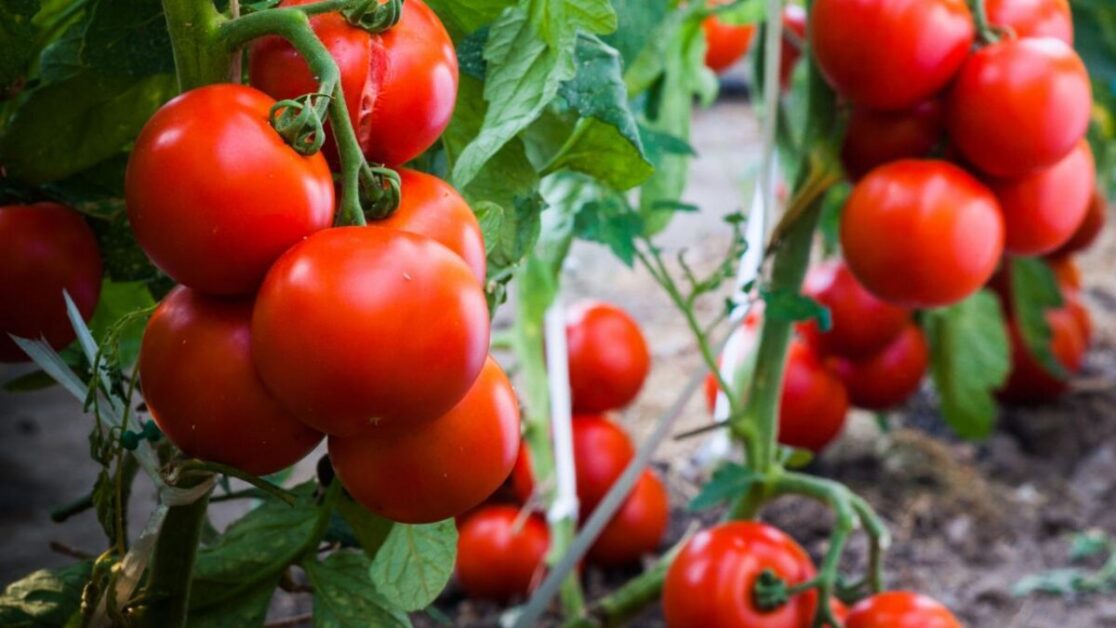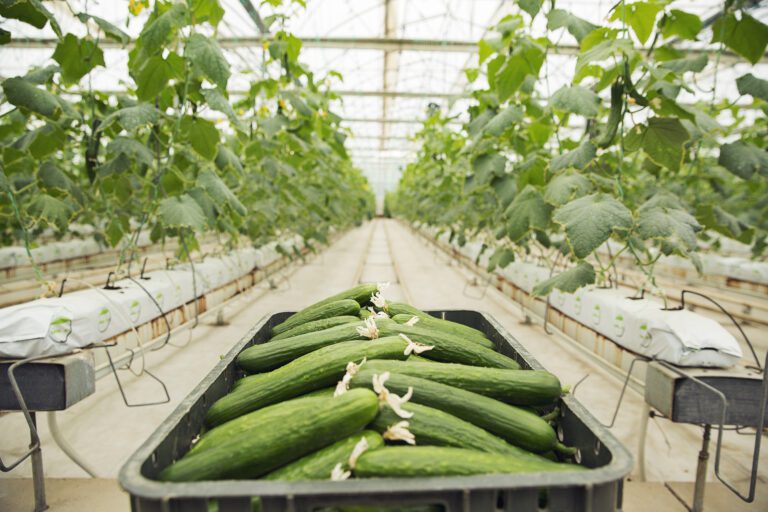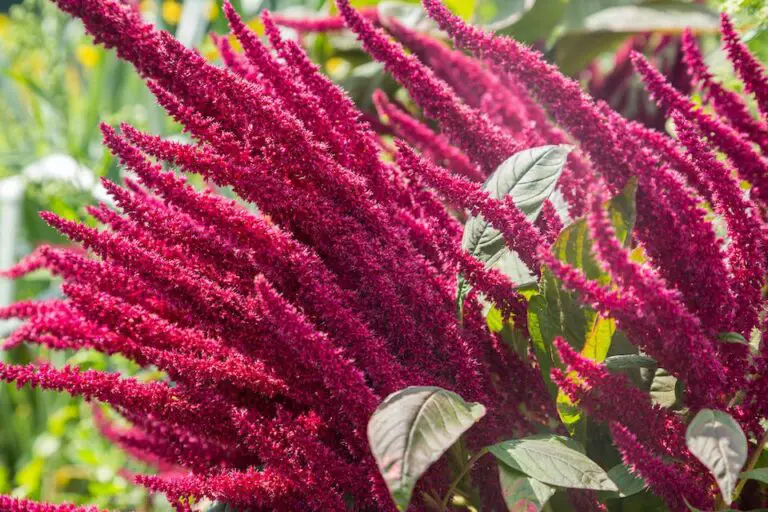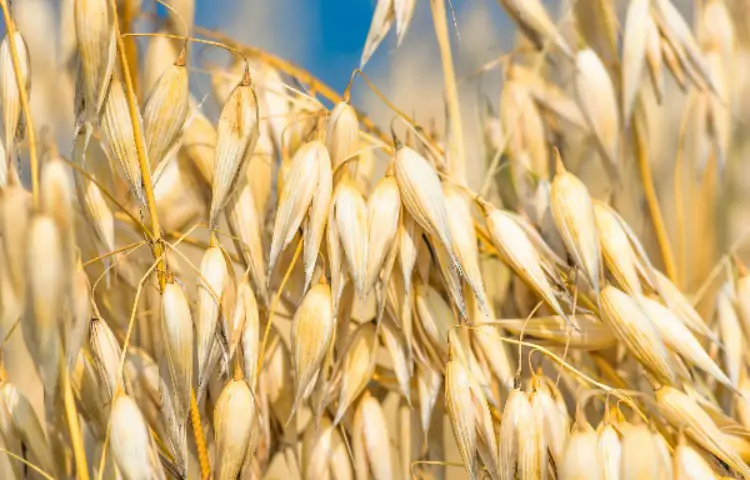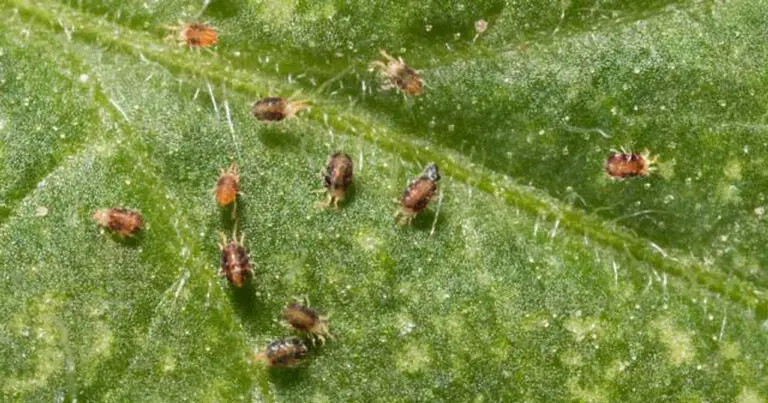Optimizing Tomato Growth with Proper Spacing Techniques
Understanding the importance of proper spacing in tomato growth
Proper spacing is crucial for ensuring optimal growth and development of tomato plants. It plays a significant role in providing the necessary nutrients, water, and sunlight that the plants need to flourish. When tomato plants are grown too close together, they compete for resources, leading to stunted growth, poor fruit production, and increased susceptibility to diseases and pests.
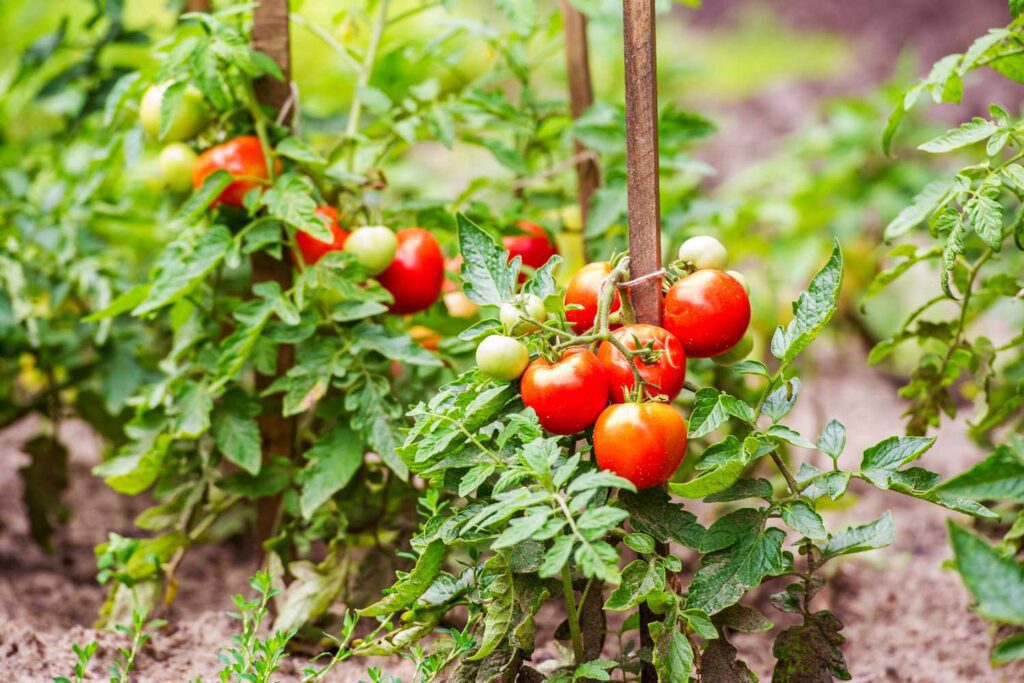
One frequently asked question is whether the same spacing recommendations apply to all tomato varieties. While there are general guidelines for spacing tomato plants, it’s essential to consider the specific requirements of each variety. Determinate tomatoes, which grow to a predetermined height and produce fruit within a specific timeframe, benefit from closer spacing to support each other and maintain an upright structure. Indeterminate varieties, on the other hand, need more space for their sprawling growth habit and continuous fruit production. Therefore, understanding the specific needs of different tomato varieties is vital in determining the appropriate spacing for optimal growth.
Factors to consider when determining the ideal spacing for tomato plants
Spacing plays a crucial role in determining the overall health and productivity of tomato plants. When determining the ideal spacing for tomato plants, several factors need to be taken into consideration. Firstly, one must consider the particular variety of tomato being grown. Different varieties have varying growth habits and sizes, and as such, the spacing requirements may differ. For compact or determinate varieties, closer spacing can be employed, while more sprawling or indeterminate varieties may require greater distances between plants. Additionally, the available space in the garden or growing area should be considered. It is important to ensure that each plant has enough room to grow and develop without being overcrowded.
Another factor to consider when determining the ideal spacing for tomato plants is the type of support or trellising system being implemented. Tomato plants that are trained vertically on stakes or cages may require slightly closer spacing than plants grown using horizontal methods, such as on a trellis or with the use of cordons. The spacing should allow for adequate air circulation and sunlight penetration to all parts of the plant, regardless of the support system chosen. This promotes proper growth and reduces the risk of diseases that thrive in damp and shaded conditions. Ultimately, the ideal spacing for tomato plants should strike a balance between maximizing productivity and maintaining healthy growing conditions.
The table below shows the factors need to be considered while determining the ideal spacing for tomato growth:
| Factor | Description |
|---|---|
| Tomato Variety | Different tomato varieties have varying growth habits and sizes, influencing the required spacing. |
| Plant Type | Determinate or indeterminate; the growth habit affects spacing needs, with indeterminate plants typically needing more space. |
| Growth Habit | Consider the natural spread and height of the tomato plant as it matures to determine appropriate spacing. |
| Soil Quality | Well-draining, nutrient-rich soil promotes healthy root development; spacing should allow for adequate soil nutrients and moisture. |
| Sunlight Exposure | Tomatoes require full sunlight for optimal growth; spacing should prevent shading and ensure adequate light exposure. |
| Support Structures | Spacing should accommodate the type of support structures (stakes, cages, trellises) to prevent overcrowding and provide proper support. |
| Watering Needs | Spacing should allow for even watering and irrigation, preventing waterlogging and ensuring uniform moisture distribution. |
| Pest and Disease Risk | Proper spacing promotes air circulation, reducing the risk of diseases and pests; plants should be spaced to minimize crowding and contact. |
The impact of overcrowding on tomato plants and its effects on growth
One common mistake that beginner gardeners make is overcrowding their tomato plants. While it may be tempting to plant as many tomatoes as possible in a limited space, this can have negative consequences on the growth and overall health of the plants. When tomato plants are too close together, they compete for vital resources such as sunlight, water, and nutrients in the soil. This leads to stunted growth, reduced fruit production, and an increased risk of disease and pest infestation.
Overcrowded tomato plants also have limited air circulation, which can create a humid and stagnant environment. This type of environment promotes the growth of fungal diseases such as blight and powdery mildew. Additionally, inadequate air circulation can hinder the pollination process as it relies on the movement of air to distribute pollen. As a result, overcrowded tomato plants may produce fewer fruits or even experience poor fruit set. To avoid these negative effects, proper spacing is crucial to give each plant the necessary room to thrive.
The role of air circulation in tomato plant spacing and its benefits
Air circulation plays a crucial role in the spacing of tomato plants and offers numerous benefits for their growth and health. Adequate air movement around the plants helps prevent the development of fungal diseases, such as blight or powdery mildew. When tomato plants are closely spaced and lack proper airflow, moisture can get trapped, creating a favorable breeding ground for these destructive pathogens. By providing enough space and allowing air to circulate freely, you can minimize the risk of disease and ensure the overall well-being of your tomato crop. Additionally, proper air circulation helps the plants dry quickly after rainfall or irrigation, reducing the chances of soggy soil and root rot issues.
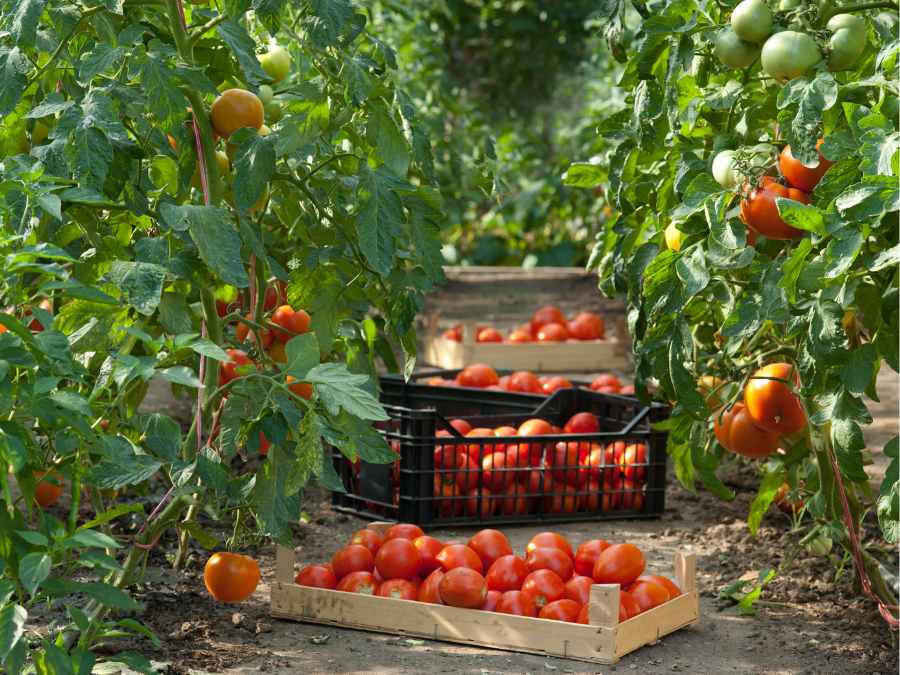
Enhanced air movement also assists in pollination, an essential process for fruit set and production. A gently breezy environment facilitates the dispersal of pollen, increasing the chances of successful pollination and subsequent fruit formation. Insufficient air circulation can lead to poor pollination, resulting in reduced yields and misshapen or undersized fruits. By strategically spacing tomato plants to allow for air movement, you can optimize pollination rates and maximize the productivity of your tomato garden. Remember to consider natural wind patterns and the orientation of your planting area when determining the ideal spacing for your tomato plants.
The relationship between sunlight exposure and tomato plant spacing
The amount of sunlight that tomato plants receive plays a crucial role in their growth and overall productivity. A well-spaced tomato plant allows for optimal sunlight exposure, which is essential for photosynthesis and fruit development. Adequate sunlight exposure not only enhances the plant’s ability to create energy but also helps in strengthening its structure and promoting better yield. Insufficient sunlight can lead to weaker plants, smaller fruits, and delayed ripening.

To ensure proper sunlight exposure, it is important to consider the orientation of your tomato plants. Planting them in a north-south row allows for maximum sun exposure throughout the day. Avoid planting them too close to tall structures or trees that cast shade on the plants for a significant portion of the day. Additionally, regular monitoring of the sun’s movement throughout the growing season can help identify any potential shade-causing obstructions that may have appeared over time, allowing you to make necessary adjustments to ensure continuous sunlight exposure for your tomato plants.
How to measure and determine the appropriate distance between tomato plants
Spacing tomato plants is essential for their optimal growth and development. To measure and determine the appropriate distance between tomato plants, there are a few key factors to consider. First, you must take into account the specific variety of tomato you are growing, as different varieties have varying growth habits and space requirements. Additionally, consider the overall space available in your garden or containers as this will impact how far apart to place tomato plants.
One unique frequently asked question is, “Should I consider the mature size of the tomato plants when determining spacing?” Yes, it is crucial to consider the mature size of the tomato plants when determining spacing. Some tomato varieties can grow quite large, reaching heights of up to six feet or more, and they also need ample space for their branches to spread out. Therefore, it is recommended to leave enough distance between tomato plants to accommodate their mature size. This will prevent overcrowding, allowing each plant to receive sufficient sunlight, airflow, and nutrients for healthy growth.
Techniques for spacing tomato plants in raised beds or containers
Raised beds and containers offer unique challenges when it comes to spacing tomato plants. The limited space requires careful planning and precise techniques to optimize plant growth and maximize yields. One option is to use square foot gardening, where each tomato plant is given its own designated square foot of space. This method allows for efficient use of space and simplifies plant management. Another technique is vertical gardening, where tomato plants are trained to grow upwards using stakes, cages, or trellises. This not only saves space but also allows for better air circulation and sunlight exposure. It is important to regularly monitor and adjust the spacing in raised beds or containers to ensure that the plants have enough room to grow without becoming overcrowded.
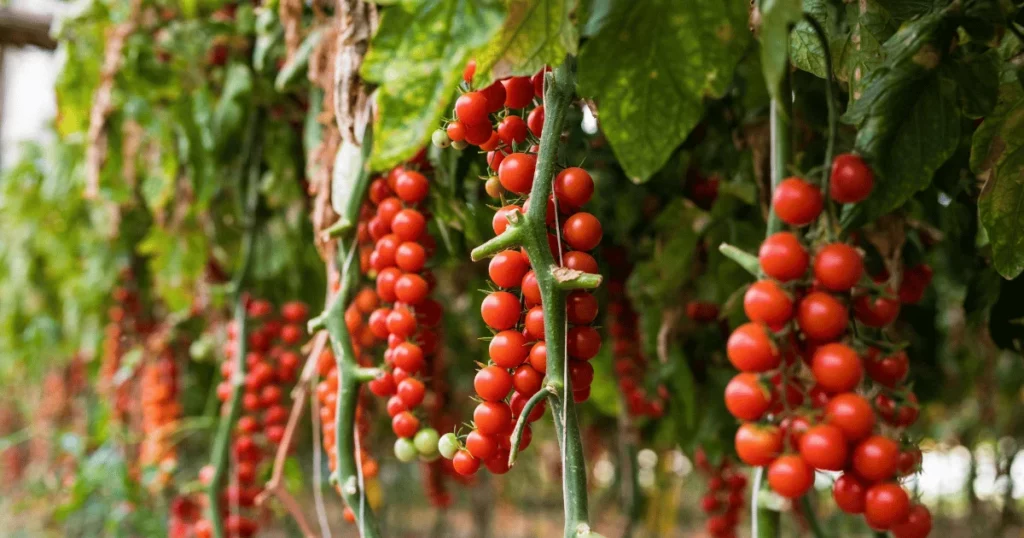
Common questions about spacing tomato plants in raised beds or containers include:
– Can I grow multiple tomato plants in a single large container?
– How do I determine the appropriate spacing for tomato plants in a narrow raised bed?
– Can I plant other vegetables or herbs alongside tomato plants in raised beds or containers?
– Is it necessary to prune tomato plants when spacing them in raised beds or containers?
By implementing these techniques and addressing these FAQs, you can create a productive and space-efficient tomato garden in your raised beds or containers.
The advantages and disadvantages of different spacing techniques for tomatoes
Advantages of Different Spacing Techniques for Tomatoes
1. Increased air circulation: Proper spacing between tomato plants allows for better air circulation, which helps prevent the buildup of moisture and reduces the risk of fungal diseases. When plants are spaced adequately, air can circulate freely around the foliage, promoting healthier plant growth and reducing the need for chemical treatments.
2. Better access to sunlight: By spacing tomato plants appropriately, each plant can receive adequate sunlight, which is crucial for photosynthesis and fruit production. Sunlight is essential for the development of sugars and flavors in tomatoes, ensuring a more delicious harvest. Proper spacing also reduces shading, preventing nutrient deficiencies and promoting healthier plant growth.
Disadvantages of Different Spacing Techniques for Tomatoes
1. Increased competition for resources: When tomato plants are spaced too closely, they have to compete for essential resources such as water, nutrients, and soil space. This can result in decreased overall growth and productivity as plants struggle to acquire enough resources to thrive. Insufficient spacing can also lead to a higher risk of disease transmission between plants.
2. Difficulties in maintenance and harvesting: If tomato plants are spaced too far apart, it can become challenging to access plants for maintenance tasks such as pruning, trellising, and pest monitoring. Additionally, harvests may become more labor-intensive as plants spread out, requiring more time and effort to collect ripe fruits. Careful consideration of spacing techniques is crucial to finding the right balance between maintenance ease and plant productivity.
The table below shows the advantages and disadvantages of different spacing methodws:
| Spacing Technique | Advantages | Disadvantages |
|---|---|---|
| Wide Spacing | – Better Air Circulation: Allows for improved airflow between plants, reducing disease risk. | – Requires More Garden Space: May limit the number of plants you can grow in a small area. |
| – Reduced Competition: Plants have more access to sunlight and nutrients. | – Weed Growth: More space between plants can lead to increased weed growth. | |
| – Easier Maintenance: Easier to tend to plants, prune, and harvest. | – Less Efficient Use of Space: Not ideal for maximizing yield in limited garden beds. | |
| Close Spacing | – High Yield: Maximizes the number of plants in a given area. | – Crowding: Plants may compete for nutrients, leading to smaller fruit and weaker growth. |
| – Weed Suppression: Dense planting can suppress weed growth. | – Increased Disease Risk: Limited airflow can lead to higher susceptibility to diseases. | |
| – Space Efficiency: Ideal for small gardens or containers. | – Challenging Maintenance: Pruning and harvesting can be more difficult in crowded spaces. | |
| Vertical Trellis | – Space-Saving: Allows for vertical growth, saving ground space. | – Requires Staking/Trellising: Requires setup and maintenance of trellises or stakes. |
| – Better Sunlight Exposure: Plants receive more direct sunlight. | – Limited Fruit Weight: Smaller fruit size due to vertical growth. | |
| – Reduced Disease Risk: Improved airflow minimizes disease chances. | – Pruning Complexity: Regular pruning needed to manage vertical growth. |
The impact of spacing on tomato plant diseases and pest control
Proper spacing between tomato plants not only has an impact on their growth and yield but also plays a crucial role in preventing diseases and controlling pests. When tomato plants are overcrowded, air circulation is restricted, creating a humid and stagnant environment that is conducive to diseases such as powdery mildew and bacterial spot. Furthermore, the lack of airflow can also lead to the buildup of moisture, which attracts various pests like aphids, whiteflies, and spider mites.

By providing adequate spacing between tomato plants, you can promote better air circulation, thus reducing the risk of diseases and pests. Sufficient space allows for better drying of leaves and helps prevent the spread of fungal spores. Additionally, it makes it easier to inspect and identify any signs of diseases or pests, allowing for swift intervention. Ensuring proper spacing can also simplify pest control measures by creating physical barriers that make it more difficult for pests to move between plants. Overall, by implementing appropriate spacing techniques, you can effectively minimize the occurrence and spread of diseases and pests in your tomato garden.
Tips for maximizing tomato yields through effective spacing strategies
Spacing plays a crucial role in maximizing tomato yields. Here are some frequently asked questions that can help you make the most of your spacing strategies:
Q: Can I plant tomatoes closer together to increase my yields?
A: While it may be tempting to crowd your tomato plants for higher yields, overcrowding can actually have a negative impact on their growth and productivity. Tomatoes need adequate space to ensure proper air circulation and sunlight exposure, which are essential for their overall health and fruit development. Overcrowding can lead to increased competition for resources, greater susceptibility to diseases, and reduced air circulation, which can hinder the growth and productivity of your plants.
Q: How do I determine the ideal distance between tomato plants?
A: The ideal spacing between tomato plants depends on various factors, including the specific variety, growing conditions, and the growth habit of the plants. As a general guideline, determinate tomatoes typically require 18-24 inches of spacing between plants, while indeterminate varieties need 24-36 inches. However, it is essential to refer to the specific recommendations provided by seed catalogs or plant labels for each individual variety. Additionally, consider leaving additional space for better airflow and accessibility when pruning and harvesting. Regular monitoring and adjusting of spacing throughout the growing season can also help ensure optimal tomato growth and maximize yields.
Understanding the concept of companion planting and its application in tomato spacing
Companion planting refers to the practice of strategically growing different plants in close proximity to one another to enhance their growth and overall health. When it comes to tomato spacing, companion planting can play a vital role in optimizing their growth and minimizing the risk of pests and diseases.
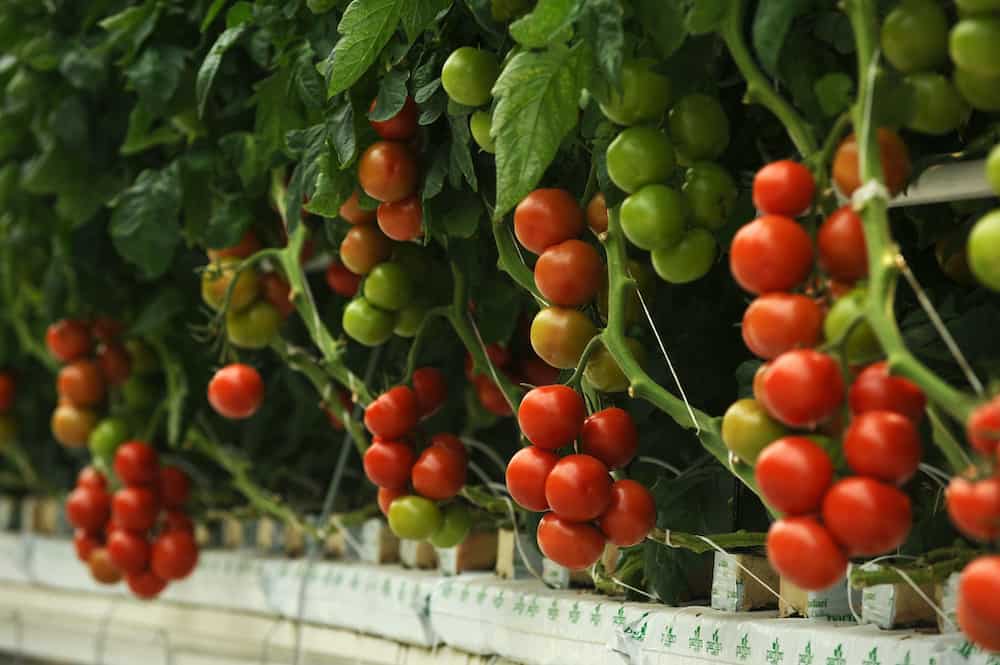
One frequently asked question regarding companion planting and tomato spacing is, “Which plants should I grow alongside my tomato plants?” Well, tomatoes benefit from the company of plants such as basil, marigold, and parsley, as they help repel common tomato pests like aphids, whiteflies, and nematodes. Additionally, the aromatic compounds released by these companion plants can improve the flavor of tomatoes. On the other hand, it’s best to avoid planting tomatoes next to members of the brassica family, such as cabbage or broccoli, as they can inhibit tomato growth and development. By considering companion planting techniques, you can maximize the health and productivity of your tomato plants.
The role of pruning and training techniques in optimizing tomato growth with proper spacing
Pruning and training techniques play a crucial role in optimizing tomato growth when combined with proper spacing strategies. By removing unnecessary branches, suckers, and foliage, gardeners can ensure that the plant’s energy is focused on fruit production. Pruning also helps prevent diseases by improving air circulation and reducing moisture retention. Training techniques, such as using stakes, trellises, or cages, provide support for the plants and help them grow upright, maximizing exposure to sunlight. These methods not only contribute to healthier plants but also make it easier for gardeners to manage and harvest their tomatoes.
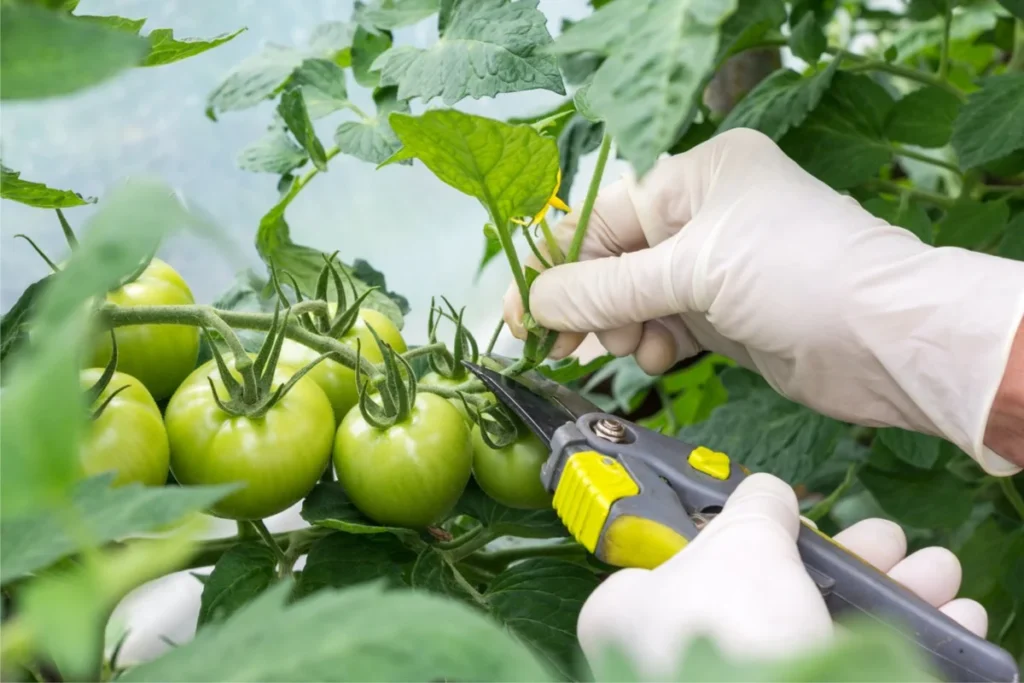
FAQs:
1. How often should I prune my tomato plants?
Pruning frequency depends on the growth rate of your plants. It is generally recommended to prune tomato plants every two to three weeks during the growing season. However, it is important to avoid excessive pruning, as this may lead to stress and reduced yields. Regularly inspect your plants for any damaged or diseased branches and remove them promptly.
2. Should I prune determinate or indeterminate tomato varieties differently?
Determinate and indeterminate varieties have different growth habits and pruning requirements. Determinate tomatoes tend to be bushy, compact plants that usually do not need extensive pruning. A light trim to remove any suckers and maintain shape is generally sufficient. On the other hand, indeterminate varieties, which grow as vines, benefit from regular pruning to encourage vertical growth and limit the number of main branches. It is important to research the specific variety you are growing and tailor your pruning approach accordingly.
How to maintain and adjust tomato plant spacing throughout the growing season
One common question that arises when it comes to maintaining and adjusting tomato plant spacing throughout the growing season is, “When should I start thinning out my tomato plants?” Thinning out refers to the process of removing some of the tomato plants to create more space for the remaining ones to grow. It is generally recommended to start thinning out the plants when they have reached about 6-12 inches in height. This allows enough room for the remaining plants to develop and spread their roots without being overcrowded. Thinning out can be done gradually over a period of a few weeks, ensuring that the remaining plants have ample space to receive sunlight and air circulation.
Another question that often arises is, “What should I do if I realize later in the season that my tomato plants are too crowded?” If you find that your tomato plants have become too dense and overcrowded, it’s not too late to make adjustments. One option is to remove some of the excess plants to allow more space for the remaining ones. This can be done by carefully uprooting the unwanted plants, being mindful not to disturb the roots of the ones you want to keep. Another option is to use pruning techniques to thin out the plants. This involves selectively cutting back some of the branches and foliage to reduce density and improve air circulation. However, it’s important to note that pruning should be done with caution and knowledge of the specific tomato variety you are growing, as some varieties may not respond well to heavy pruning.
Watch the video to know more about the tomato plants spacing.
Common mistakes to avoid when spacing tomato plants
One mistake to avoid when spacing tomato plants is overcrowding. It may be tempting to plant as many seedlings as possible in a limited space, but this can have detrimental effects on their growth. When tomato plants are too close together, they compete for sunlight, nutrients, and water, leading to stunted growth and lower yields. It is important to give each plant enough space to spread out and receive the necessary resources for optimal growth.
Another common mistake is neglecting to adjust the spacing throughout the growing season. As tomato plants grow, they require more space to accommodate their increasing size. Failing to regularly monitor and adjust the spacing can result in overcrowding and hinder overall plant health. It is crucial to check the plants regularly and make any necessary adjustments by thinning out or transplanting seedlings to ensure they have enough room to grow and thrive properly.
Here is a atble that shows the common mistakes to avoid while spacing tomato plants:
| Mistake | Description |
|---|---|
| Overcrowding | Planting tomatoes too closely can lead to overcrowding, limiting air circulation and promoting diseases. |
| Inconsistent Spacing | Failing to maintain consistent spacing between plants can result in uneven growth and competition for resources. |
| Ignoring Tomato Variety Guidelines | Neglecting recommended spacing guidelines for specific tomato varieties may hinder their optimal development. |
| Insufficient Sunlight | Placing plants too closely can lead to shading, reducing sunlight exposure and affecting overall productivity. |
| Poor Soil Drainage | Inadequate spacing can impede proper drainage, increasing the risk of waterlogged soil and root diseases. |
| Neglecting Support Structures | Forgetting to account for the support structures (stakes, cages) can lead to sprawling plants and fruit touching the ground. |
| Overlooking Watering Needs | Inadequate spacing may result in uneven watering, with some plants receiving too much or too little moisture. |
| Ignoring Companion Planting Principles | Failing to consider companion planting can lead to increased pest issues or hinder the growth of neighboring plants. |
The importance of regular monitoring and maintenance in ensuring optimal tomato growth with proper spacing
Regular monitoring and maintenance practices play a crucial role in ensuring optimal tomato growth with proper spacing. By consistently observing and assessing the plants, gardeners can identify early signs of stress or any potential issues that may hinder their development. Monitoring includes checking for nutrient deficiencies, pests, diseases, and environmental factors such as temperature and moisture levels. By staying vigilant and addressing any problems promptly, growers can prevent further complications and promote healthy tomato growth.
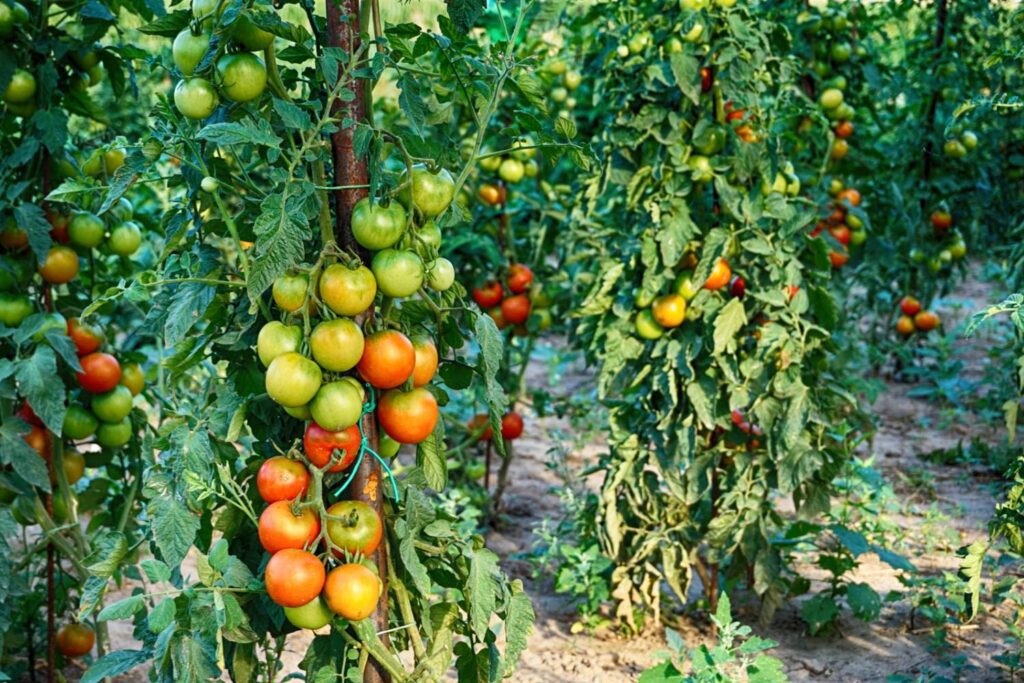
One frequently asked question is, “How often should I monitor my tomato plants?” Ideally, tomato plants should be monitored at least once a week throughout the growing season. However, during critical stages such as flowering and fruiting, it is recommended to increase the frequency of monitoring to ensure timely intervention if any issues arise. Another common query is, “What maintenance tasks should I undertake to promote optimal tomato growth?” Maintenance tasks include regular watering, proper fertilization, pruning, and training. Watering should be done consistently to maintain appropriate moisture levels, ensuring that plants neither dry out nor become waterlogged. Fertilization should be carried out according to a proper schedule, providing the necessary nutrients for robust growth and fruit production. Pruning and training techniques help manage the plant’s size, focus energy on fruit development, improve air circulation, and simplify the monitoring process.
Resources and further reading for mastering tomato plant spacing techniques.
1) Tomato Plant Spacing: A Comprehensive Guide by Gardeners World. This book provides in-depth knowledge on the importance of proper tomato plant spacing and offers valuable insights into the factors that should be considered when determining the ideal spacing for your tomato plants. It also discusses the impact of overcrowding on tomato plants and its effects on growth, as well as how to measure and determine the appropriate distance between tomato plants. With practical techniques and expert advice, this resource is a must-have for any tomato enthusiast looking to maximize their yields through effective spacing strategies.
2) The Tomato Gardener’s Bible by Mary R. Scott. This informative book delves into the various techniques for spacing tomato plants, particularly in raised beds or containers. It explores the advantages and disadvantages of different spacing techniques and explains how proper spacing can impact tomato plant diseases and pest control. Additionally, it offers guidance on maintaining and adjusting tomato plant spacing throughout the growing season, as well as tips for avoiding common mistakes. With its comprehensive approach and clear instructions, The Tomato Gardener’s Bible is a valuable resource for anyone seeking to master tomato plant spacing techniques for optimal growth and harvest.
Why is proper spacing important for tomato plants?
Proper spacing allows for adequate air circulation, reduces competition for nutrients and sunlight, and helps prevent the spread of diseases among tomato plants.
What factors should I consider when determining the ideal spacing for tomato plants?
Factors to consider include the variety of tomatoes being grown, the available space, the type of growing environment (such as raised beds or containers), and the desired growth and yield.
What are the effects of overcrowding on tomato plants?
Overcrowding can lead to poor growth, decreased yield, increased susceptibility to diseases and pests, and reduced air circulation, which can contribute to fungal infections.
How does air circulation impact tomato plant spacing?
Adequate air circulation helps prevent the buildup of moisture and humidity, reducing the risk of fungal diseases and promoting healthier plant growth.
What is the relationship between sunlight exposure and tomato plant spacing?
Proper spacing ensures that each tomato plant receives sufficient sunlight, which is crucial for photosynthesis and optimal fruit production.
How can I measure and determine the appropriate distance between tomato plants?
The distance will vary depending on the specific variety, but a general guideline is to space determinate tomato plants 2-3 feet apart and indeterminate tomato plants 3-4 feet apart.
What are some techniques for spacing tomato plants in raised beds or containers?
Techniques include utilizing trellises or cages to support vertical growth, staggered planting to maximize space, and using appropriate-sized containers for individual plants.
What are the advantages and disadvantages of different spacing techniques for tomatoes?
Advantages of proper spacing techniques include better air circulation, reduced competition, and easier maintenance. Disadvantages may include the need for more space and potential limitations in certain growing environments.
How does spacing affect tomato plant diseases and pest control?
By providing adequate spacing, you can reduce the risk of diseases and pests spreading through overcrowded plants, as well as improve access for pest control measures.
What tips can you provide for maximizing tomato yields through effective spacing strategies?
Some tips include regular pruning and training, proper fertilization, mulching to retain moisture, and monitoring for pests and diseases.
What is companion planting, and how does it apply to tomato spacing?
Companion planting involves strategically placing compatible plants near each other to benefit growth and deter pests. For tomatoes, planting them near basil or marigolds can help repel pests and improve overall plant health.
How do pruning and training techniques optimize tomato growth with proper spacing?
Pruning and training techniques, such as removing suckers and supporting vines, help manage plant size, improve air circulation, and focus energy on fruit production.
How should I maintain and adjust tomato plant spacing throughout the growing season?
Regular monitoring of plant growth and adjusting spacing as needed, such as thinning out overcrowded areas, will help maintain optimal spacing throughout the season.
What common mistakes should I avoid when spacing tomato plants?
Common mistakes include overcrowding plants, underestimating the space requirements of certain varieties, and failing to consider the potential growth and spread of the plants.
Why is regular monitoring and maintenance important for optimal tomato growth with proper spacing?
Regular monitoring helps identify any issues early on, such as overcrowding or disease symptoms, allowing for timely intervention and adjustments to maintain optimal spacing and plant health.
Where can I find additional resources and further reading on mastering tomato plant spacing techniques?
Check out the following resources for more information on tomato plant spacing techniques:
– [Resource 1]
– [Resource 2]
– [Resource 3]

